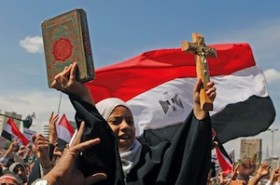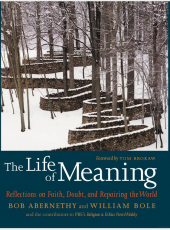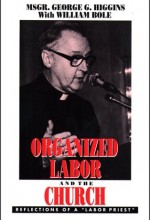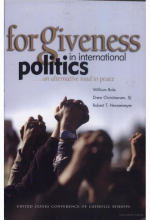 Religious groups stake out a wider role in violent conflicts.
Religious groups stake out a wider role in violent conflicts.
On Sept. 11, 2001, a cadre of young Muslim men hijacked planes and, perhaps with visions of black-eyed virgins in Paradise, crashed them into the Pentagon and the twin towers of the World Trade Center, acting supposedly in the name of their religion. Within hours of these atrocities, Top 40 radio stations across the United States began playing John Lennon’s anthem “Imagine,” which supplied what many saw as a soundtrack of hope and harmony in the aftermath of the terrorist attacks. The lyrics longingly envisioned “all the people, living life in peace.” But with a disquieting relevance to the suicide attacks, Lennon had also pondered, “Imagine there’s no heaven…and no religion, too.”
Since then commentators have fleshed out this contemplation of a religion-free world. “Imagine no suicide bombers, no 9/11…no Crusades…no Israel/Palestine wars…no Taliban,” wrote the prominent atheist and evolutionary biologist Richard Dawkins five years after the towers crumbled. This past December, 30 years after the ex-Beatle was gunned down by a deranged fan, the comedian and television personality Bill Maher, alluding to religious strife in general, sent a message to his fans on Twitter: “Remember Lennon said ‘Imagine NO religion.’ Honor what he wrote—it holds up.” These and other secularist screeds have tapped into a larger feeling that religion usually is a cause of violence rather than an agent of peace helping to resolve and heal conflicts.
This perception is not hard to substantiate. On any given day, religious rivalry is likely to combust into deadly street violence somewhere. In March, for instance, Muslims and Christians clashed mercilessly in Egypt, leaving a dozen dead and 140 injured after the torching of a Coptic church near Cairo. Apparently a love affair between a Muslim man and a Christian woman sparked a feud between the couple’s families, which escalated into a street fight between Copts and Muslims. Just a month after the nonviolent campaign that toppled the dictator Hosni Mubarak, religion was again dividing rather than uniting. And yet some of the more profound images of the anti-Mubarak uprising were those of Muslims and Coptic Christians rallying together in Cairo’s Tahrir Square—young people holding crosses and Korans with raised hands joined, Christians forming a circle around prostrating Muslims to protect them from police during their Friday prayers and other scenes of interreligious amity.
Religious Peacebuilding
In struggles around the globe, religious believers are showing that they can bow in either direction: toward entrenchment and extremism or toward solidarity and compassion. Untold numbers of faith communities are exploring the latter option, using both spiritual and worldly tools to lessen conflicts and prepare a way for lasting peace and stability. In doing so they are pressing their inherent advantages, which include having a foothold in many fractious societies and adherents at many or all levels of those societies, as the Catholic Church often has. In her 2006 book The Mighty and the Almighty, Madeleine Albright, secretary of state during the Clinton presidency, went further to say that faith-based organizations “have more resources, more skilled personnel, a longer attention span, more experience, more dedication, and more success in fostering reconciliation than any government.”
Increasingly these religious works are being assigned to the broader category of “peacebuilding,” a movement with no clear definition of itself but a growing movement nonetheless. The compound word came into play during the 1990s, as the international community grappled with post cold-war conflicts in places like the former Yugoslavia and Rwanda, which, unlike the superpower rivalry, derived from centuries-old religious and ethnic grievances.
The intractability of these conflicts called for strategies beyond simply hammering out cease-fire resolutions. In 2005 the United Nations inaugurated its Peacebuilding Commission, an advisory body that seeks to improve international support for countries emerging from violent conflicts, helping with peacekeeping, mediation, reconstruction and long-term development programs. Beginning in the administration of George W. Bush, even the U.S. military spoke the language of peacebuilding in its “post-conflict” efforts to rebuild Iraq’s political institutions and physical infrastructure, notwithstanding that president’s famous aversion to “nation-building.” Non-governmental organizations and projects with peacebuilding in their names have proliferated almost as visibly as AK-47 assault rifles in African conflict zones.
According to its practitioners, peacebuilding is different from traditional peacemaking, in part because the work is continual and not simply a reaction to the onset of war. “Peacebuilders strive to address all phases of…protracted conflicts, in which pre-violence, violence and post-violence periods are difficult to differentiate,” writes R. Scott Appleby, director of the Kroc Institute for International Peace Studies at the University of Notre Dame, referring to the cyclical nature of long-running conflicts in countries like Colombia, the Philippines and parts of Africa. Another mark of peacebuilding is that it “engages all sectors of society and all the relevant partners,” ranging from business and political leaders to religious communities and even perpetrators of violence, Appleby reports in Peacebuilding: Catholic Theology, Ethics, and Praxis (Orbis Books), a fresh collection of studies produced by the Catholic Peacebuilding Network at Notre Dame. Peace-treaty negotiators and “Troops Home Now” banner carriers are no longer the only players in the peace arena.
“Peacebuilding is a growth industry” is a favorite expression of Maryann Cusimano Love, a professor of international politics at The Catholic University of America and a member of the steering committee of the seven-year-old Catholic network that has been identifying, studying and bolstering this work within the Catholic Church worldwide. She refers principally to the secular peacebuilding community, which features such heavy hitters as the United Nations and the U.S. Institute of Peace, a quasi-governmental body that promotes international conflict resolution. The faith-based component of this movement is less recognizable—more like a startup company or a multitude of such ventures, often operating below the political radar. By most accounts, religious peacebuilding has barely begun to gel into an international movement of its own, whether ecumenically or within such a large and socially engaged institution as the Catholic Church. Still, much is happening in many places.
As Madeleine Albright intimated, religious peacebuilders can do things their secular counterparts cannot do, like respond directly to the spiritual need for personal healing and reconciliation. But the resources that religious communities bring to violence-wracked societies are more basic: they are there, on the ground, operating parishes, schools and social services. This is a significant asset because, as Professor Love points out, one-third of the world’s nations are failed states, meaning they have no central government to speak of and lack such institutions as educational and health care systems.
Peaceful Transition in South Sudan
The Republic of South Sudan is now an incipient state, following a referendum earlier this year in which voters chose overwhelmingly to secede from the government in Khartoum, splitting up Africa’s largest country. Most analysts had predicted that the referendum in January would be thwarted or tainted by violence and chaos, in a land where millions of people had been killed in decades of civil war between the mostly Arab and Muslim north and the mostly black Christian and animist south. But Sudan’s churches, which have institutional assets in the south (including radio stations), spearheaded prayer campaigns for a durable peace, aimed especially at encouraging voters to turn out despite fears of northern-backed militia violence during the seven days of balloting.
Parish volunteers confronted other obstacles by showing illiterate people how to cast the ballots. Faith-based humanitarian agencies like Caritas Internationalis helped foster a sense of stability, providing a stream of vital services including potable water and sanitation. Against long odds, the elections turned out to be free, fair and relatively tranquil. The churches (Catholic and Anglican, mainly) not only carved out a nonviolent path, with guidance from the international community but, in view of the institutional vacuum, are considered the only indigenous institutions that could have done so. Reversing course, Sudan’s government in Khartoum accepted the outcome of the referendum.
In other countries, physical infrastructure and governmental institutions may be largely in place, but there may also be gaps in what Kenneth R. Himes, O.F.M., a theologian at Boston College, calls the “human infrastructure for peaceful communal life.” As he has described in several articles, such an infrastructure would include the requisite “social space” for people to come together and contribute to stability and reconciliation. In dozens of countries ranging from Colombia to Sri Lanka to Uganda, religious leaders have attempted to fill this particular vacuum by forming civil-society organizations to address common concerns. These local initiatives are often assisted by international groups, including the New York-based World Conference of Religions for Peace and the Washington-based International Center for Religion and Diplomacy. One important tool has been interreligious dialogue, a term that to Westerners may suggest a prosaic activity, an obligation undertaken by theologians and local clergy associations. In other parts of the world, however, there is drastically more at stake in these dialogues, particularly where talking to one another is an alternative to mutual slaughter.
Interreligious Dialogue
On the large island of Mindanao in the Philippines, where Islamic insurgencies are scattered around the southern region, distrust between Muslims and Christians is palpable. In 1995 a Catholic peace group commissioned an opinion survey of Catholic priests and religious in southwestern Mindanao. Most of these leaders would not trust a Muslim with their valuables, would not want a relative to have an “intimate” relationship with a Muslim and would prefer to avoid physical proximity with Muslims altogether, according to the findings by the sociologist Grace J. Rebellos of Western Mindanao State University, who helped conduct the study for Peace Advocates Zamboanga. The Catholic group had been formed in 1994 by activist laypeople, religious and clergy—as was a similar Muslim association, the Salam Peace Foundation. Soon after, the two faith contingents merged into Paz-Salam, which has since facilitated a plethora of low-profile, small-group conversations involving Christian and Muslim young people, schoolteachers and even soldiers. Paz-Salam has made its biggest splash with the Mindanao Week of Peace, which began in 1997 as a local interreligious peace festival in the town of Zamboanga. It was taken islandwide a few years later by a larger interfaith partnership, the Bishops-Ulama Conference, sponsored by Catholic prelates and Muslim ulama, or clergy and scholars. The sheer numbers are impressive. The peace week, held annually in late autumn, opened grandly this past year with a parade through Zamboanga that banded together 20,000 Catholics, Protestants, Muslims and Lumads or indigenous people.
Less peaceable forces, however, are contending. There have been bombings in shopping malls by Islamic separatists and harsh crackdowns by the Filipino military, constantly countered by acts of interreligious solidarity. The U.S.-based Catholic Relief Services and its Mindanao partners have added materially to the goodwill by setting up interfaith economic ventures in Mindanao, including a cooperative Christian-Muslim bakery. (In Indonesia, the world’s largest Muslim nation, C.R.S. took particular care to distribute prayer rugs and veils to Muslim women following the devastating tsunami that struck off northern Sumatra in December 2004; it was an interfaith gesture and a deliberate first step toward building trust between Christians and Muslims there.)
In almost every region with a major conflict, faith-based agencies, including the evangelical-sponsored group World Vision, have mounted peacebuilding initiatives that range from grass-roots mediation and trauma healing to economic development and the resettling of child soldiers in places like Uganda and the Democratic Republic of Congo. Such programs date to the 1990s, when relief agencies saw their best-laid plans for development in Rwanda unravel in the genocide there and realized that peace work had to be incorporated into humanitarian work. C.R.S. is running peacebuilding programs in 50 countries.
Armed Actors
Faith-based peacebuilding makes room for a prodigious array of participants or actors, as they are called in this field—bishops, priests, lay staff, catechists, scholars, relief workers, regular parishioners and others. Not excluded are the people holding the guns, who are, in the nomenclature, armed actors.
One participant is General Raymundo Ferrer of the Armed Forces of the Philippines, which has waged counterinsurgency campaigns in the southern islands since the 1970s. During the past decade he concluded that a final military victory was unlikely and began repairing ties with long-aggrieved Muslims in little ways. He ordered his troops to point their guns down and smile at Muslims when passing them on the streets, as Professor Love spotlighted in a detailed case study of military-religious peace collaboration in the Philippines she conducted for Georgetown University’s Institute for the Study of Diplomacy. General Ferrer himself began striking up conversations on the streets near his post in Basilian, Mindanao, meeting the locals, among them a Catholic social worker who wasted no time linking him up with interfaith peace activists. They, in turn, persuaded him to sign up for peacebuilding training conducted jointly by C.R.S. and the Mindanao Peace Institute, a Mennonite-Catholic collaboration. He did so in 2005, in the face of resistance from both the army’s top brass and church human-rights activists who distrusted the military.
Since then the general has enrolled his colonels in classes dealing with nonviolent communications, mediation, religion and culture, community relations and more. Professor Love reports that the training has helped enlighten members of the army command while also teaching officers practical skills that can be useful, for example, in mediating disputes between feuding Muslim clans. Disunity among Muslims is a complicating factor. The Filipino government has frequently made conciliatory strides together with Islamic insurgencies, only to see members of those groups splinter off to renew fighting.
Sometimes peacebuilders refer to “bad actors,” like the so-called narco-guerillas in Colombia or the Maoists fighting in the Philippines (usually separately from the Muslims). These are extremely violent characters who, nevertheless, have been engaged in dialogue by church representatives through peace-and-justice offices. Peacebuilders are not purists.
The roles of armed actors throw light on a sobering dimension of peacebuilding—that the work is fraught with risk, pitfalls and ambiguity, as John Paul Lederach of the Kroc Institute emphasizes. (Many of the “bad actors” appear on the U.S. terrorism watch lists that have proliferated since Sept. 11, 2001, which could make dialogue with them illegal.) Prominently situated within the messiness is the Catholic Church, which, as Lederach points out, tends to be the only institution with adherents on both sides of polarizing divides. As a result, church representatives often find themselves building relationships with different groups of armed actors, including bad ones, many of whom are accessible in part because they cling to the symbols and imagery of the Catholic faith in which they were raised. Mr. Lederach, who has facilitated peace training in 25 countries, is one of the most influential figures in both the secular and faith-based peacebuilding communities. “The church has an ubiquitous presence” in many societies, he says, meaning that its representatives can reach out to co-religionists at society’s higher echelons as well as into local communities. A Mennonite, Mr. Lederach jokes that he has a case of “hierarchy envy.” He marvels at the ability of bishops to mobilize the church for peacebuilding purposes across various sectors of society (when they are so inclined).
Secularist Blindspot
The global scale of faith-based peacebuilding is difficult to measure, partly because of definitional questions about what qualifies under the heading. A fair indication of the scope would be C.R.S. and its peacebuilding operations in 28 of the 35 conflict-weary nations, programs conducted almost always in collaboration with other groups, Catholic and non-Catholic. The impact is real, but reality has not changed perceptions within the “imagine no religion” choir or among secular experts in international relations who tend not to discuss religion except as a source of intergroup violence. “It’s the skunk at the garden party,” as Ms. Love puts it, referring to religious intrusions into those discussions. Attitudes are beginning to shift (one sign being former Secretary of State Madeleine Albright’s contention that religion is part of the solution), “but it’s a slow movement,” Love adds.
This is not to say that faith-based peacebuilding is a coherent, well-conceived enterprise. Many of its practitioners would admit they are making up much as they go along and that there is a shortage of moral and religious reflection to guide them. Catholics in the movement seem especially concerned about the missing theological frameworks. The Catholic Peacebuilding Network has been bringing ethicists and theologians together with grass-roots peacebuilders in a number of countries to generate a clearer account of this work in light of Catholic faith. Gerard Powers, the network’s coordinator and a noted international affairs analyst at the University of Notre Dame, explains that Catholic just-war doctrine may speak robustly to questions about when it is right to go to war and how to conduct the intervention morally, but the teaching is far less incisive when it comes to wars that are seemingly without end and to post-conflict situations.
How does the church engage the bad actors while also demanding accountability for their crimes? Mr. Powers asks, articulating one moral quandary. “That’s a peacebuilding question, not an ethics-of-war question,” he says. These are the issues faced by a religious community that has entered the fray and that is searching for a way through the ambiguity, intractability and belligerence to make peace possible.
Published in the August 15 – 22, 2011 edition of…
![]()






Awesome article
Excellent article. It’s so tragic that adherents of different religions see each other as enemies, when all religions have the same inward purpose. So long as they insist on divisiveness, the reasonableness of the atheists is going to be harder and harder to argue against.
Thank you for the comment–all too true.
Hi Bill. Very insightful and thought-provoking!! Thanks for making these blogs available.
I have been developing a distrust for organized religions…too self serving, manipulative, and sometimes downright immoral and selfish. Patriotism for country is too often embedded in a country’s religion(s).
We all have our ethnic biases and love for our forefathers “way of life”. But these feelings must be put aside when dealing with national and worldwide issues. Separation of church and state should be/must be adhered to around the world. Spirituality…Yes! Disorganized Religions…No!
You are on the right track! All the best, Bob
Thanks for the contribution, Bob. “True believers” scare a lot of people, but they’re a diverse lot.